
The COROS Heart Rate Monitor is a very simple product, which should make for a very simple review. After all, it doesn’t even have an on button. Instead, it has exactly one purpose in life: Transmitting your current heart rate over Bluetooth.
The main selling point? Aside from no button, it claims 38 hours of battery life. To turn it on, you simply stick it on your body. Ideally your upper arm, but the COROS Heart Rate monitor doesn’t discriminate – it’ll happily get turned on by touching any warm body part. Once that connection is established, it’ll broadcast out three concurrent Bluetooth Smart signals. ANT+ need not apply, it’s not included. Neither does it currently store any data on the sensor either, though it does have the hardware long-term for COROS to potentially add that.
With that, let’s get into it.
Oh, and as usual, this review isn’t sponsored. I’ve been using a media loaner COROS HR Monitor, and put it through its paces, after which it goes back to COROS. Actually, COROS said they didn’t want it back due to sanitary reasons, but I think I’ll still send it back – stank and all. No company gets to preview my reviews ahead of time, nor have any say on what’s in them. As always, I’m gonna call it like it is – both the good and the bad. If you found this review useful, you can use the links at the bottom, or consider becoming a DCR Supporter, which makes the site ad-free, while also getting access to a mostly weekly video series behind the scenes of the DCR Cave. And, of course, it makes you awesome.
In The Box:
Keeping with the historical lineage of past COROS products, the unit comes in a heavily oversized box. At first glance you may be concerned about the size and weight of the device based on said box, but in reality, the actual sensor part is quite light and small. Here’s the contents:
The contents are divided up into three categories:
A) A paper thing
B) A charging thing
C) A buttonless heart rate monitor
I can’t foresee many use cases for the paper thing. I mean, there’s no buttons. You just put it on your arm. Still, I appreciate that some might not realize the app is required to initially activate it. Without that, you won’t get any broadcasting of heart rate data.
Next, there’s a tiny charger:
And lastly, the band. It includes a resizable strap that you can adjust accordingly:
Like I said at the beginning, this is not a complex product with a lot of pieces.
Day to Day Usage:
The first step, aside from any required charging, is to pair it up with the COROS app. In order to do that you’ll need to get sensor-on-skin contact, so it wakes up. If you don’t pair and activate it with the COROS app, it will not broadcast your heart rate. After this point, you don’t need the COROS app. Though, it will actually automatically pair the COROS HR Sensor to any COROS watches you have, which is a nice touch.
With that out of the way, you can adjust the strap as required to fit your arm. Generally speaking, the best and most accurate place for optical HR sensors is on the outside of your upper arm. You want to avoid a scenario where the sensor bumps into anything (like your chest), as that could introduce issues. Here’s a good place to wear it:
Or when outside, I tucked it under my jersey:
Or here, on my wife (who I also utilized for testing this go around). Note that for the two watches on her hands, those are simply collecting HR data from straps/sensors, not the optical HR sensors within them (as that’d be poor).
The key thing is ensuring that the optical sensor on the back is snug on your skin, not moving, and not being rubbed by something else that could impact accuracy. There’s a small status light on the side, so you can see whether or not it’s currently turned on.
Here’s what that sensor looks like:
Oh, and the band says “Explore Perfection” on it, which is adjustable (the band, not the wording), and has a Velcro section at one end.
Because I’m all about the details, here’s a spec sheet COROS had, for the handful of other things that I haven’t covered – including that said band is made of Nylon, Polyester Fiber, and Spandex. Also, don’t use it above 122°F. Realistically, don’t do anything above 122°F – nothing good will come of it.
Now, with the specs out of the way, let’s find the device or app that you want to pair it to. Thus far I’ve paired it to: Zwift, TrainerRoad, COROS APEX 2 Pro, a variety o Garmin watches, the Garmin Edge 840, the Wahoo Fitness app, and probably a few other things I’m forgetting. In all cases, I had no issues with pairing over Bluetooth Smart.
As noted, the unit does not have ANT+ in it, only Bluetooth Smart. Within that, it can support three concurrent connections over Bluetooth Smart. COROS says that the chipset they selected doesn’t support ANT+. While I think that’s a minor poor business decision (for reasons I’ll get to in a second), I don’t think it’s actually a huge deal. These days, virtually every app/device supports the Bluetooth Smart heart rate sensor profile. And since they’ve got three concurrent sessions, that pretty much covers any multi-device type scenarios.
The downside to this is that if one were comparing specs against their equal or lesser-priced competitors, they’d note that those competitors (including Polar and Wahoo) all support both ANT+ & Bluetooth. Which, puts them at a slight disadvantage. But again, in 2023 I don’t think it’s a huge deal.
Now, with that paired up, you’ll see your heart rate on the device/app of choice:
And that’s kinda it. I mean, there are no other functions to discuss at this point in time. COROS says that long term they’re looking to add a swim mode, which would store the data during swimming. But as of today, that mode doesn’t exist – and there’s no timelines (fuzzy or firm) on what or if that might happen. Thus, any operation of the COROS HR sensor must be with another app/device.
Finally, when it comes to battery life, COROS claims 38 hours of battery life. In my testing, this holds true. You can check the battery life in the app by connecting to the sensor. Thus I would do before/after checks to see if the burn rate matched. Further, I didn’t see any accidental battery depletion when in my backpack, so that’s good. It really does seem to require sensor-on-skin contact to wake up.
However, while the 38 hour battery claim is real (and the main thing they tout over their competitors), there’s a catch there: You’re likely to burn more battery than just the stopwatch time of your workout. For many people, there’s a period before/after the actual run/ride/gym/etc that’s going to burn battery. Let’s say (like yesterday), I got all dressed/set for my ride, then I pedaled from office to home 10 minutes away to meet my wife for her long-ride. There, she finished getting ready…and before we knew it 45 minute was spent. We rode for 90 minutes, after which we grabbed coffee/etc for another 45 minutes.
During the before/after 45 minute chunks, the HR sensor was on my skin burning battery – as there’s no off-button. Sure, I could stick it in my pocket, but I promise you it’ll fall out and get lost (done that for other band sensors before).
Is this a big deal? Of course not. And while a chest strap would effectively have the same before/after battery burn – it’s got a battery duration in the 1-2 year range. Likewise, with the Polar Verity Sense, TICKR FIT, and Scosche sensors, they all have power buttons. Thus letting you use it when you want it. Again, not a big deal, but I’d guess that the real-world battery duration for most people is gonna end-up a wash with the Polar Verity Sense due to the pre-post burn times.
Accuracy:
Next up, let’s take a look at accuracy of the COROS Heart Rate sensor, as compared to a few different options on the market: Chest strap, wrist watches, and other optical HR sensors.
For those not familiar, the existing optical HR sensor band king (by a massive margin) is the Polar Verity Sense (previously the Polar OH-1). That band is relatively similar in concept to the COROS HR Monitor, except it has buttons, multiple sport modes, the ability to save workouts and a bunch more integration. It’s got very strong accuracy that’s well respected by every reviewer out there. So, I used that as well as the Whoop 4.0 strap as competitor options.
But I also used a COROS APEX 2 Pro watch as a comparison point, a Garmin Forerunner 955, and a Garmin chest strap (HRM-PRO Plus). In other words, plenty of competitive options here to see how things handled. And, I got my wife involved too with her running interval workouts.
Let’s first start with a slate of intervals I did on an indoor trainer, compared to COROS APEX 2 Pro built-in optical sensor, Garmin Forerunner 955 built-in optical sensor, Garmin HRM-PRO Plus chest strap, Whoop 4.0 band, and Polar Verity Sense band:
In this case, all the sensors did quite well here. Well, except Whoop 4.0. It was a bit lower/slower than everyone, but that’s kinda its thing. The COROS sensor matched the chest strap, as did the watches. But, an indoors trainer workout like this is kinda the easiest bar to pass. There’s no vibrations, no major ‘thunks’ of your footsteps, or any other environmental type issues.
So let’s head outside for a road bike ride of about 90 minutes. This includes some substantial 50KPH winds. I note the winds because with a band there could be buffeting in gusts, but the band was mostly under my jersey (albeit the watches weren’t).The comparison units are essentially the same as above:
As you can see here, again, the COROS HR sensor did quite well. Whereas the COROS APEX 2 Pro? Not so much. It struggled twice significantly (teal), and then had a few bits here and there where it struggled slightly. The Garmin Forerunner 955 (green) also had a short period early on where it struggled optically too. But the COROS HR sensor here also did fine, which again, doesn’t really surprise me.
The bicep is among the easiest places to measure something optically, and in the case of a road ride, it’s heavily cushioned from major bumps. Whereas the wrist is quite challenging on a bike, due to the strain your wrists are usually under when holding onto handlebars.
So, let’s step it up again. This time a run. In this case it was steady-state, followed by some intervals. This time the Fenix 7S Pro in place of the FR955, and then I had a COROS APEX 2 Pro in the mix, but each time it syncs it re-adds the HR strap back in there to the paired sensor list, and I didn’t remember to yank it out. Thus, it was just a duplicate of the COROS HR sensor I recorded on another watch. This time the COROS HR sensor is in purple:
And immediately you might notice what I noticed, a ton of little spikes/drops. Essentially, the COROS HR Sensor is going up/down a ton, swinging upwards of 10bpm over the steady-state line of all the other sensors. That’s a lot. Here’s what it looks like when zoomed in:
I don’t see any obvious explanation for this. It was pancake flat ground/pavement, with incredibly steady cadence. This just appears to be the unit struggling to be sure about itself. You can se it struggles a little bit after that 5th interval as well (up above).
So, let’s try another interval workout. This one a warm-up, followed by some rather hard intervals. Here you can see the COROS APEX 2 Pro (in yellow) completely loses the plot. If COROS were to be developing an ad for why you need to buy this strap, this is a good example. Albeit, a bad ad for the COROS APEX 2 Pro. The COROS HR Sensor locks on really nicely here. We see the Fenix 7S Pro struggle a bit in a few of the intervals, but nowhere near as bad as the APEX 2 Pro, which…well…just look at it:
But again, for the COROS HR Monitor, it’s fine here – and virtually identical to the other sensors.
At this point, I still want to get a few more data sets in. I’m headed out for another run shortly, plus some MTB tomorrow and a few more bits here and there. Accuracy-wise, it mostly looks good, but the wobbles on one of the runs concerns me a bit. There was no firmware update between the different workouts (it’s on the production firmware). I’ve seen optical HR sensor wobbles before on a variety of other companies’ products, and it can be an incredibly tricky thing to resolve. Especially if it’s triggered by only certain things/scenarios/use cases, or if it’s transient (as seems to be the case here).
Again, it’s something that with more data over the next week or two I should be able to sort out.
(Note: All of the charts in these accuracy portions were created using the DCR Analyzer tool. It allows you to compare power meters/trainers, heart rate, cadence, speed/pace, running power, GPS tracks and plenty more. You can use it as well for your own gadget comparisons, more details here.)
Product Comparison Table:
I’ve added the COROS Heart Rate Monitor into the product comparison table, so you can see how it compares to other options on the market. The long and the short of it is that the COROS HR Monitor has a bit better battery life (albeit with the always-on caveat I noted above), but lacks any sort of on-board recording/storage that you see with the Polar Verity Sense. It also lacks ANT+, which may or may not matter to some people.
| Function/Feature | COROS Heart Rate Sensor | Polar Verity Sense | Scosche RHYTHM+ 2.0 | Wahoo TICKR FIT |
|---|---|---|---|---|
| Copyright DC Rainmaker - Updated November 28th, 2024 @ 2:11 pm New Window | ||||
| Price | $79 | $99 | $79 | $79 |
| Product Announce Date | July 27th, 2023 | Feb 10th, 2021 | Jan 10th, 2021 | Jan 3rd, 2018 |
| Product Availability Date | July 27th, 2023 (US, Rest of World Sept 2023) | Feb 17th, 2021 | Mar 15th, 2021 | Jan 3rd, 2018 |
| Measurement Type | Optical | Optical | Optical | Optical |
| Typical Placement | Upper Arm | Upper Arm | Mid/Upper Arm | Mid/Upper Arm |
| Battery Life | 38 hours | 30 hours | 24 hours | 30 hours |
| Battery Type | USB Rechargeable | USB Rechargeable | USB rechargeable | USB rechargeable |
| NFC Capable | No | No | No | No | HR Transmission | COROS Heart Rate Sensor | Polar Verity Sense | Scosche RHYTHM+ 2.0 | Wahoo TICKR FIT |
| ANT+ | No | Yes | Yes | Yes |
| Bluetooth Smart | Yes (three channels) | Yes (dual channels) | Yes (three channels) | Yes |
| Dual concurrent ANT+/BLE | No | Yes | Yes | Yes |
| Analog for gym equipment | No | No | No | No |
| Usable HR data underwater | No | Using swim clip | Depends: If on same wrist, YMMV. | Depends: If on same wrist, YMMV. |
| Bridging ANT+ to Bluetooth Smart | No | No | No | No |
| Can record activity in memory | No | Yes | No | No | Additional Data | COROS Heart Rate Sensor | Polar Verity Sense | Scosche RHYTHM+ 2.0 | Wahoo TICKR FIT |
| Run Pace | No | No | No | No |
| Run Cadence | No | No | No | No |
| Run Economy/Metrics | No | No | No | No |
| Cycling Cadence | No | No | No | No |
| Cycling Power Meter Estimation | No | No | No | No |
| Valid HRV/RR data | No | No | No | No |
| Configurable Sport Modes | No | No | No | No |
| Displays HR Zones | No | No | No | No |
| Requires Bluetooth Smart Phone for Configuration | Yes | No | No | No |
| Firmware Updateable | Yes | Yes | Yes | Yes |
| SDK For App Developers | No | Yes | No | No | App | COROS Heart Rate Sensor | Polar Verity Sense | Scosche RHYTHM+ 2.0 | Wahoo TICKR FIT |
| Can show workout afterwards | No | Yes | N/A | N/A (No recording) |
| Can sync files/workout to 3rd party | No | Yes | N/A | N/A (No recording) |
| More Info | Link | Link | Link | Link | Purchase | COROS Heart Rate Sensor | Polar Verity Sense | Scosche RHYTHM+ 2.0 | Wahoo TICKR FIT |
| Amazon | Link | Link | Link | Link |
| Backcountry.com | Link | |||
| Competitive Cyclist | Link | |||
| REI | Link | Link | Link | |
As usual, you can use the full product comparison database to mix and match and compare to other heart rate sensors as well.
Wrap-Up:
The COROS Heart Rate Sensor seems like an interesting start for a product line from COROS. Initial accuracy seems mostly good, and I didn’t have any connectivity/integration type issues – it paired up just fine. The instant-on when attached to my body also made it easy to use. Neither my wife or I had any problems adjusting the band to find a good fit, and neither of us had any sort of slippage issues with the band design. Nor did the band ever accidentally flip-over (a semi-common issue with the older Polar OH-1, which the Verity Sense resolved).
The challenge COROS has with this unit though, is primarily the launch features and current pricing. This feels a bit rushed to market, especially given its only launching in the US right now, with the rest of the world in September. With the far more full featured Polar Verity Sense just $10 more (and often on-sale for the same price), I’d struggle to see why I’d recommend a lesser featured and less accurate product. The Polar also has the entire ecosystem of the Polar app behind it, so you can use that to track training, zones durations, and much more. Sure, it has slightly less battery life on paper, but in practice I’d consider it a wash, because I can simply turn the sensor off. Plus, it’s compatible with more devices/apps too, given it has expanded protocol support. Had COROS launched with on-device recording included, I think the pricing would be justified.
Still, it’ll be interesting to see where COROS goes from here with it. COROS has a long record of adding new features to watches after launch, albeit a lesser/non-existent record of doing the same for their external sensors/pods. Thus it’s hard to predict exactly which camp this device will fall into long term. As usual though, more competition is good, as it encourages companies to add new features, increase performance/accuracy, and lower prices.
With that – thanks for reading!
Found This Post Useful? Support The Site!
Hopefully you found this review/post useful. At the end of the day, I’m an athlete just like you looking for the most detail possible on a new purchase – so my review is written from the standpoint of how I used the device. The reviews generally take a lot of hours to put together, so it’s a fair bit of work (and labor of love). As you probably noticed by looking below, I also take time to answer all the questions posted in the comments – and there’s quite a bit of detail in there as well.
If you're shopping for the COROS Heart Rate Sensor or any other accessory items, please consider using the affiliate links below! As an Amazon Associate I earn from qualifying purchases. It doesn’t cost you anything extra, but your purchases help support this website a lot.
And of course – you can always sign-up to be a DCR Supporter! That gets you an ad-free DCR, access to the DCR Quarantine Corner video series packed with behind the scenes tidbits...and it also makes you awesome. And being awesome is what it’s all about!
Thanks for reading! And as always, feel free to post comments or questions in the comments section below, I’ll be happy to try and answer them as quickly as possible. And lastly, if you felt this review was useful – I always appreciate feedback in the comments below. Thanks!




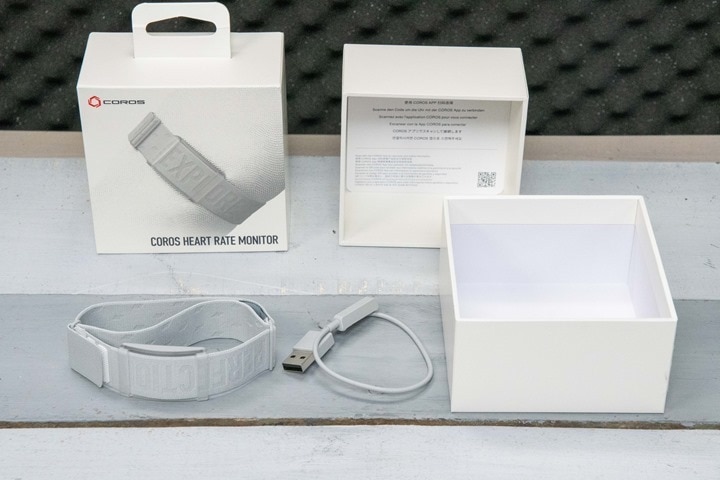
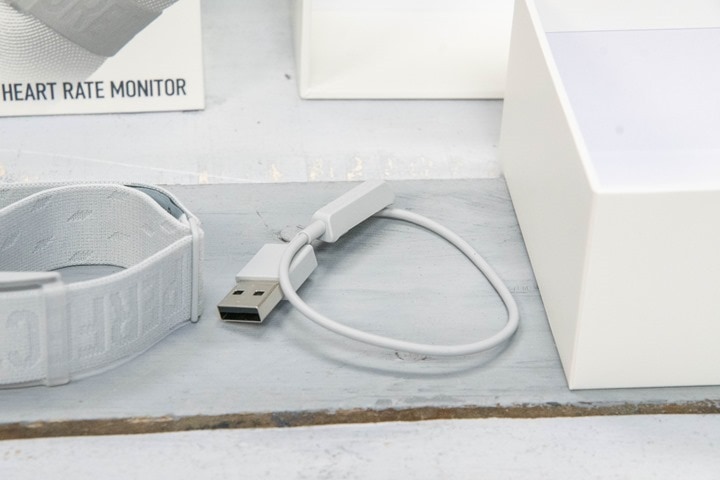
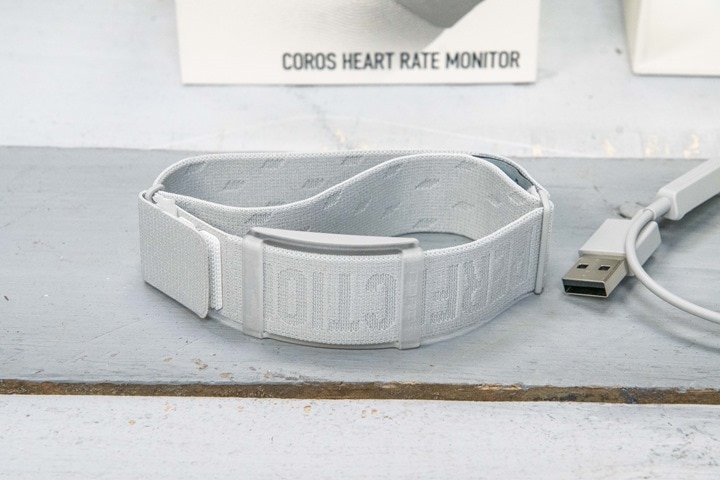
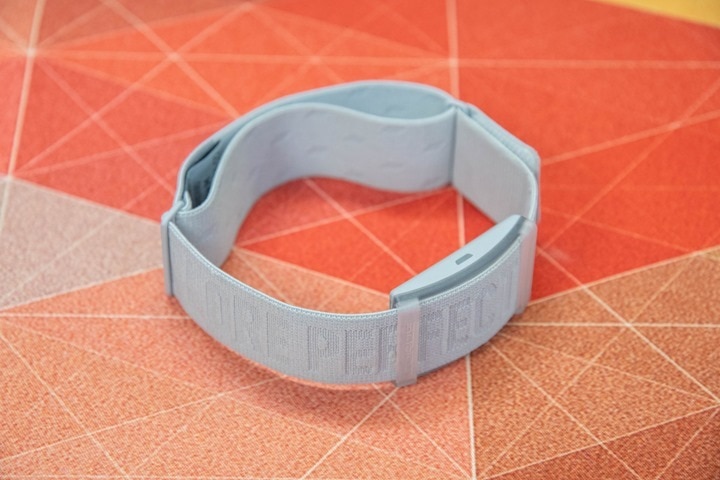

![clip_image001[6] clip_image001[6]](https://media.dcrainmaker.com/images/2023/07/clip_image0016_thumb.png)
![clip_image001[8] clip_image001[8]](https://media.dcrainmaker.com/images/2023/07/clip_image0018_thumb.png)
![clip_image001[10] clip_image001[10]](https://media.dcrainmaker.com/images/2023/07/clip_image00110_thumb-1.png)
![clip_image001[6] clip_image001[6]](https://media.dcrainmaker.com/images/2023/07/clip_image0016_thumb-1.jpg)
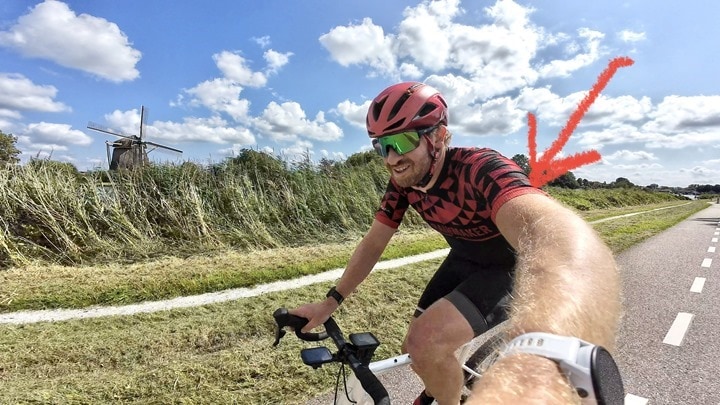
![clip_image001[4] clip_image001[4]](https://media.dcrainmaker.com/images/2023/07/clip_image0014_thumb.jpg)
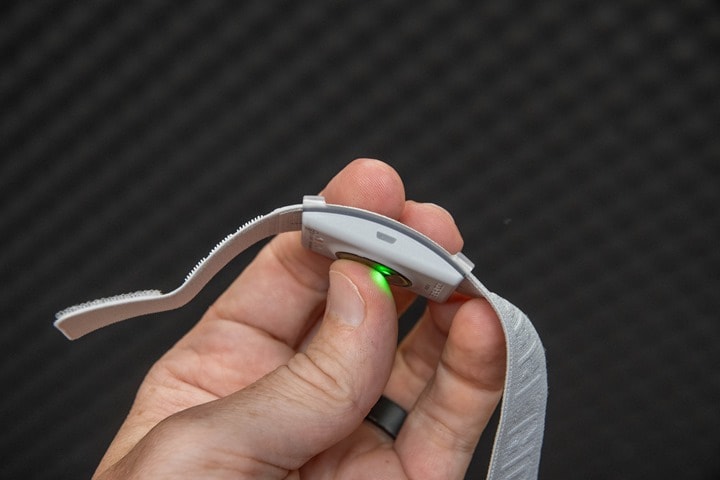
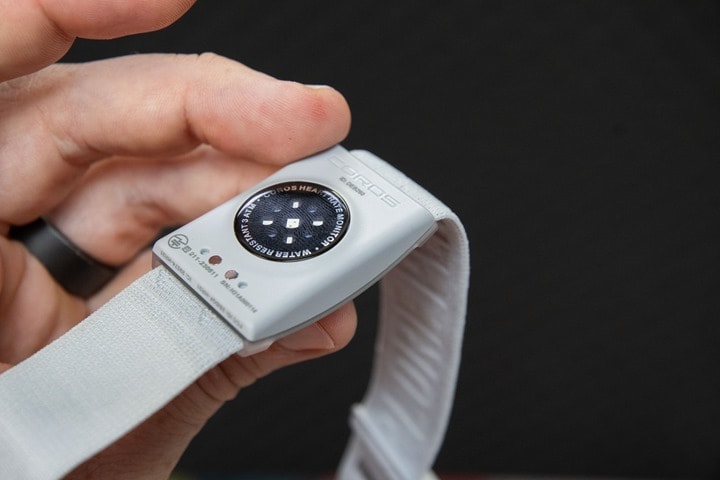
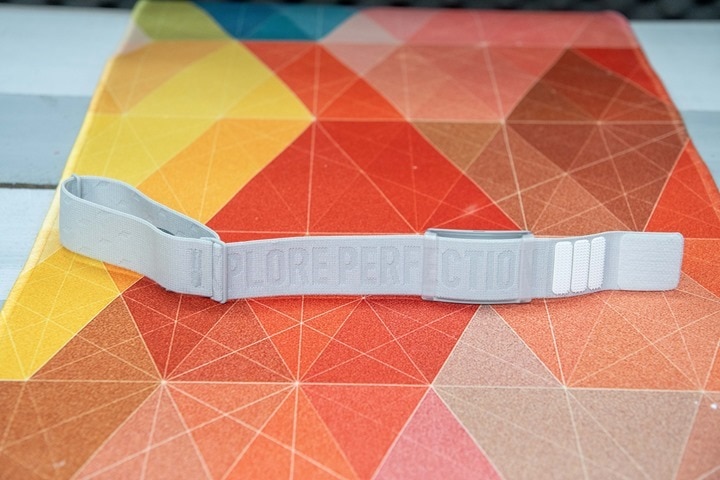

![clip_image001[8] clip_image001[8]](https://media.dcrainmaker.com/images/2023/07/clip_image0018_thumb-2.jpg)
![clip_image001[14] clip_image001[14]](https://media.dcrainmaker.com/images/2023/07/clip_image00114_thumb-1.png)






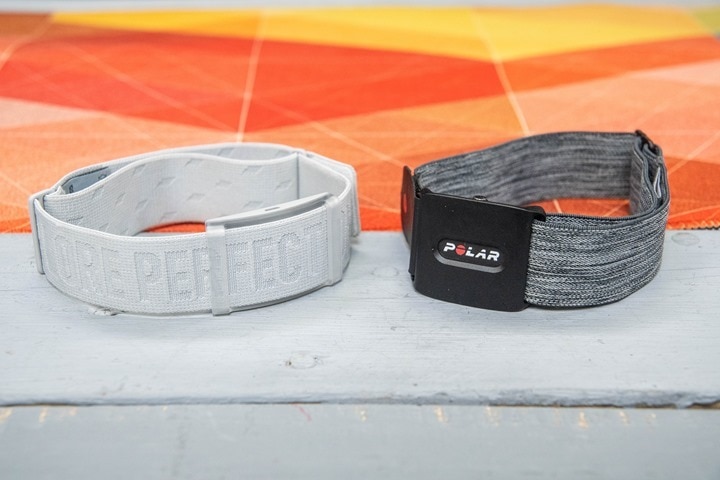
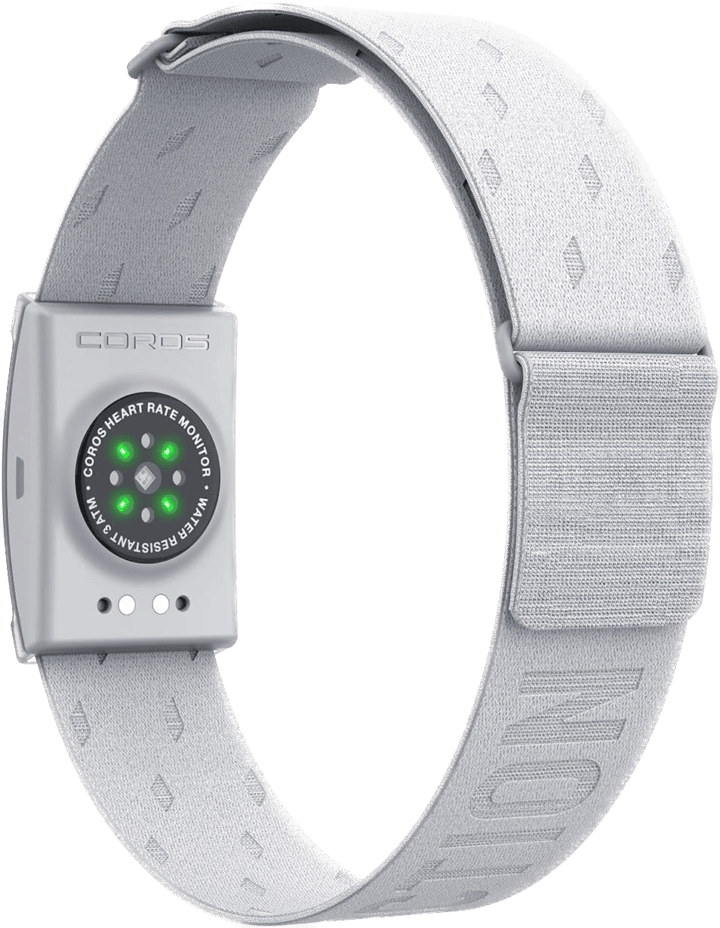





















I don’t suppose there’s any way you could test it on a rowing machine (erg).
I’m after something that sights nicely when on it, and my watch does an appalling job (obviously because of all the wrist movement). It’ll likely be the Verity for the same reasons you mention above (and the fact that I’m in the UK), but it would still be handy to test against a chest strap.
Sadly I don’t have an ERG machine. And I believe my Dutch Olympic rowing buddy is still out of town, but I’ll check if he can give it a whirl when he gets back.
Hey Nathan, if it helps I’ve used a Verity Sense for years on my Concept2 and it’s worked extremely well.
Strange that you don’t have the Scosche products on your comparison table.
Oddly, cause I made a typo in the product ID. Fixed!
Thanks!
Rhythm +2.0 has been $40 for a while in the US. I just got another to replace my previous one that failed. After ~1.5 years, the back cracked right across the sensors, with no apparent cause. Sweat got in corroding things.
Why would you buy another one if it lasted only 1.5 years. I had the rhythm24 for 3 years and it all off a sudden died on me. I moved on to try something else. I’d expect something like this to last longer but maybe i have too lofty expectations.
In the plot where you had some wild departures it looks like the COROS HR Monitor was paired to a Garmin Forerunner 265. I’ve seen the same performance on this arm strap when I paired with a Garmin watch, but then that same monitor paired to a COROS watch shows a chart that is nearly a perfect match with an Apple Watch Ultra and a Garmin HRM-Pro.
It looks to me like there is some signal issue when pairing the COROS HR Monitor with a non-COROS watch so I would love to see if your further testing confirms this issue. Not sure why there is such a difference compared to pairing to a COROS watch.
For better or worse, on that particular run, I had it also accidentally (also) paired with the COROS APEX 2 Pro, and it recorded the exact same variations.
I’ve never seen any HR sensor change the actual HR BPM values based on signal issues, since it’s purely transmitting at that point.
Thanks Ray. I’m not sure why I saw this behavior with the two watches both connected to the COROS HR Monitor. The results should have been exactly the same.
Purple is the COROS Vertix 2 and red is the Forerunner 965, both collecting HR data from the COROS strap.
It almost looks like one is on smart recording, and one is on one-second recording. But, not quite. Certainly quirky.
Yes, that’s likely it. I just checked the Forerunner 965 and data recording was on Smart so maybe that’s the issue. More testing ahead…
Yeah, smart recording is a weird beast. No idea why Garmin continues to keep it around. Though, some of the newer units are getting rid of the option (and going 1s, like everyone else).
Thanks. Very helpful. I prefer the armband heart rate monitors. Presently using Scosche. It would be helpful to see the graph comparisons for which is the most accrurate.
Interesting comparisons and I love what Coros is doing here but it’s hard to beat the Scosche which has hovered around $39 on Amazon for months. By your review, the Scosche is as accurate as the Polar OH1 and it’s less than half the price. I bought one a couple months ago after an old Mio Link finally met it’s end. No complaints and does Ant+.
I’m on my third Scosche. They work well and are a great value, but the battery life starts to drop quite a bit after a few years, so bear that in mind. I’m not sure if that’s just inherent to the design (squeezing maximum life out of a very small li-ion battery) or no battery management or what, but it’s probably the case with all of these devices.
Mio Link?
Dang…feel like we all need to observe a moment of silence there.
Amen. Yeah. I thought it died in February 2022 but finally got it to charge. It would only last about three hours the last three years, so it was my dedicated Zwift only HRM. I would just put it back on the charger every ride or two. Of course, little use in the summer. I don’t know exactly, but it lasted 8 years give or take. I think I got my monies worth. Somewhere in fitness device heaven is deserves a place next to the Garmin 305 and Fenix 3HR.
Hey Ray thanks for the review! As I’m looking at this I’m thinking: “I already own this, it’s a Wahoo Tickr FIT, just released 5+ yrs later, without the ANT+ or a power button.” I mean…, that’s it really. So if I’m in the market to replace a Tickr FIT (hey it happens, I own 3), what does this “new” Coros band bring to the table? Rhetorical shrug. Maybe it’s the motivational message on the band — pretty sure I haven’t “explored perfection” yet! 😂
Do you think this kind of product will support ECG in the future? I find it strange that none of them tend to go on this path. Is it a technical limitation?
Seems like they gimp/minimal these products on purpose in the hope of preserving watch sales?
I don’t think it’s possible to get an ECG reading on an arm or strap, they need to measure electrical activity from either side of the heart. I think the market for these optical HR straps is people who don’t want to wear a chest strap but are doing sports where a wrist based optical sensor struggles.
Apple Watch takes ECG’s. It requires you to touch the crown with your other arm. It definitely isn’t something that’s supported when you’re actually doing an activity. But it’s there, and occasionally i use it to remind myself that it’s there. I think there’s a Garmin watch that supports ECG’s, too.
Double the price Coros, give it one week battery life (like fitness bands) and an accelerometer, and we will have a whoop like device that can pull customers from Whoop and Garmin.
This is what I want to see from Polar with the verity sense, or an updated version. Let me buy the unit and not a subscription.
Fair enough. But a bit sad for the customer if it’s the underlying issue…
Does it “do” HRV recording? The Scosche does, but the Polar does not for example. Only a few of my app/services support the HRV recording but just curious as that would be a differentiator between your comparisons.
Regarding your issue with it burning battery when not in ‘actual’ activity, could you just flip the band/device over? Would that turn it off in those situations of driving to/from or hanging out after activity?
Great write up. I’m using the COROS Apex and was thinking of getting this or potentially even the Polar Verity Sense. Anyone have any sense of how well this would work with tattooed arms? Both my arms are fully covered until you get to the wrist. The wrist HR on my Apex watch is generally okay, but struggles a bit down longer hills or during really fast speed sessions. I’ve used a chest strap in the past but it’s getting a bit long in the tooth.
Hello.
I’m in the market for a new heart rate sensor.
I have owned an H7 and an H9 chest strap and was very happy with them so my doubt is if these optical sensors are more or less reliable then the chest strap.
What is the recommendation?
Man, that last graph looked really bad for the Apex 2 pro. Was that a one of or is it usually that bad?
Great article, thanks. I’ve been considering buying a HR monitor, as I constantly hear/read people say the watches are completely unreliable. I was considering the Coros, because if Emma Bates uses it, it’s gotta be good, right?!
However after reading your review I’m wondering if my Garmin FR 955 is just fine for what I need it for. I’m currently training for a marathon, but am by no means an elite athlete, so I’m not sure having yet another item to bring with me on my runs is necessary at this point.
Anyone know how well this device (or any similar arm-based straps) perform on the wrist? I have a Whoop 4.0 and wife wants purely an optical HRM for workouts and not a chest strap or smart watch.
Any chance if you would be reviewing the COROS Pace 3 anytime soon?
Would be great, for my needs anyway, if some sort of activity that relies on arm force (other and more than swimming) can be included in the testing protocol of the optical sensors. My experience with Scosche, Whoop and multiple Fenix watches in paddling (surfski, kayak) and cross country skiing is that they are utterly useless. Indoor rowing could be an easily accessible activity of that kind I’d say.
Hi, any idea if it this heart rate monitor captures accurate RR intervals? If so, does it alter or smooth the R-R intervals in any way?
if I have to use the coros app to turn it on, I don’t want it. I want to buy an armband HR sensor today to use with FulGaz and with my Wahoo Elemnt Bolt, but not if it works like that. Hopefully there are others that work better. (I did look at reviews and stuff last winter, but don’t remember what I thought was best at that time.) Seems to me there were a couple of main competitors.
Dear Ray, I noted that when out its cold, near 10C the strap doesnt works good, not only on intervals of one minute but even on long runs, i see various spikes in the graph, even if i wear longsleeve shirt. Did you notice it?
Did anyone have pairing issue with COROS heart rate monitor and Garmin Forerunner 45?
Supposingly on Garmin Forerunner 45 you can add heartrate monitor but it cannot find my COROS HRM even after I’ve put it on, Strava (on phone) says it’s connected, and my phone is bluetooth connected to HRM.
Any clue?
Forerunner 45 only supports ANT+ connection with HR monitor? Does it support Bluetooth Smart too?
FR45 does not support bluetooth sensors. Only Ant+
Thank you so much, Ryan!
Is there a heart rate monitor that will pair to a Garmin 45?
(sorry – not tech savy, but trying my best to learn)
The FR45 connects to ANT+ heart rate sensors, but predates Garmin adding Bluetooth heart rate sensor support, and given the COROS HR sensor doesn’t have ANT+, that combo won’t work.
Instead, any Garmin chest strap (the HRM-DUAL is a good option that’s pretty reasonable), as well as the Polar H9, or if you want an armband, the Polar Verity Sense is a good option. All of those are dual ANT+/Bluetooth Smart.
Very helpful review. Few questions, I just got the coros armband, I’m a polar vantage v user (very unhappy with the polar h10 and their customer service hence why I didn’t go with the verity sense). Did you pair with a polar watch at all? I’m having trouble getting this to show up on my polar watch, though I did successfully pair it. What were the steps to activating it with the coros app? I simply connected it there but I’m wondering if I’m missing something and that’s why it’s not broadcasting to my polar watch. Anyway TIA, keep the reviews coming
I just got the armband for Christmas, so let me see if I can help.
Once the armband is added in the Coros app, on my Garmin Forerunner I had to go into Settings > Sensors & Accesories > Add new. Now I just throw it on my arm before my run and my watch automatically connects to it.
I’m sure the menu options are a little different on the Polar but hopefully that the step you’re missing.
For the activation to the COROS app, it was simply adding it in the COROS app. If you have a new strap, depending on when it was made, there may be a firmware update to it.
In my case, for the activation, COROS says that activation should no longer be required for new straps. They said that went into effect very shortly after it launched.
Upgrading my last review: it seems that with the latest firmware the signal has improved because the band is much more reactive even in the shortest intervals and when worn on the forearm.
Hello,
Will the Coros pair with my Garmin Instinct 2S?
Thank you,
Michael
Yes. The Instinct 2S supports Bluetooth HR sensors, which COROS broadcasts as.
Has anyone used/tested this while nordic skiing or rowing? Is it annoying and noticeable on your arm? Is the data as accurate during an arm intensive exercise as when running/riding?
I have the polar one because coros wouldn’t work with my watch but it feels the same. I used it for downhill skiing, didn’t even realize I was wearing it.
I used to prefer my Scosche Rhythm optical arm band to my Garmin chest strap for nordic skiing. I didn’t compare it with the chest strap but the data looked fine. (Since then, I’ve acquired a Garmin HRM Pro and an Epix 2, so I can now get xc power from the combination. So I didn’t use the Scosche during my 4 days of skiing last month. Who knows whether I’ll get any more this winter; looks like I’ll be riding outdoors the next few days.)
Scosche, Whoop (on the upper arm) were giving me completely erratic readings for XC skiing, kayaking and (indoor) rowing. But sometimes I feel like I’m some sort of an outlier although I’m neither dark-skinned nor hairy, because they didn’t work particularly well for running or cycling either. ¯\_(ツ)_/¯
How do you pair to a garmin (235) watch please. Cant find anything online
I don’t think that’s possible. This strap transmits over Bluetooth and doesn’t support ANT+. The Forerunner 235 only has Bluetooth for phone communications, it doesn’t work with Bluetooth sensors.
Correct, no BT support on the FR235 for sensors, just hone.
Did I miss it, or how does it compare to a chest strap which I think of as the gold standard.
In all of the data sets discussed above you find results from a Garmin HRM-PRO Plus.
Hey – thanks for the review. I’m still waiting on the updated data, as it has become more prevalent around Europe.
Hi, I’m trying to use the Coros heart rate monitor with a Garmin Fenix 6S, it shows that it has connected when I go to start my run but when I try to find any data it is not there. Does anyone know if this strap is compatible with a Garmin Fenix 6S? I contacted Coros and they said contact Garmin? Thank you!
Have you paired it to the COROS phone app and done any updates?
Setting aside the Garmin side, will it pair in a 3rd party app like Strava or rhe free Wahoo Fitness app?
Hey thanks for coming back with a reply.
I have paired it with the COROS phone app, but it registers no activity. I paired it with Strava and the pairing worked, but I wonder if i have to start the activity on Strava itself on my phone to make it work rather than what I have been doing which is letting it link to my Garmin then starting my activity from Garmin. I hope that makes sense?
Has Coros ever tried to investigate/address the steady-state issue you experienced?
My Polar OH1+ seems to have died yesterday after almost 4 years of regular use. Hard to tell if 4 years is impressive or inadequate for a $80 OHR device. I know they have the verity sense now but as far as I can tell, the hardware is largely identical, mostly the band was upgraded, meaning it’s using a 2019 sensor/tech?
This strap looks pretty interesting and a bit sleeker. It also doesn’t have the clunky charging pod which is easy to lose. The auto on/off might also work better as long as it’s reliable.
Overall I don’t need any fancy features. I just want a comfortable and accurate arm strap since I pair it with a device anyway for recording activities.
Thank you Ray for the review! Quick question: when paired with a Garmin, how can you see that the HR recording was indeed made with the Coros? Reason I am asking is that I do not find any hint in the activity details; in contrast to some recent Garmin products like the HR Pro, it is also not shown in the device section of the activity. Best, Marcel
Nothing that you’ll see in the general pages. It does show up deep in the undercover .FIT file details, but it’s not easy to see otherwise as a user.
thanks Ray for verification; i used a .fit-viewer but I am still not sure; i have it attached – it lists Ant+ for HR but i only used the Coros which does not support Ant+ but only bluetooth; the stated serial number is also not a part of the Coros serial. Can you identify if it was used?
My Coros HR paired to my Garmin Fenix 6X without first having to connect it to the Coros app. In fact, I never even downloaded the Coros app. Was very easy to pair and seems to be working well. Love the ease of use.
Yes, they since changed it to not require the app.
Im new to the heart rate monitor world. Recently learned about trying to stay in zone 2 heart rate area. With the Cora band, what app would show a live reading of the heart rate? I have the Oura ring and it tracks the heart rate but only shows the stats after the workout. Again, I’m really looking to be able to keep an eye on my heart rate during a workout out, ie rowing, outdoor biking/peloton
I don’t know if you still have this same question, but the Coros heart rate monitor connects to a watch (Coros, Apple, Garmin, etc.) and when you select Activity (like Run), it will display your heart rate continuously until you end the Activity. There may be apps that you can pair it with as well so you can track your heart rate during a workout. I use TR Virtual for indoor cycling and it pairs with that.